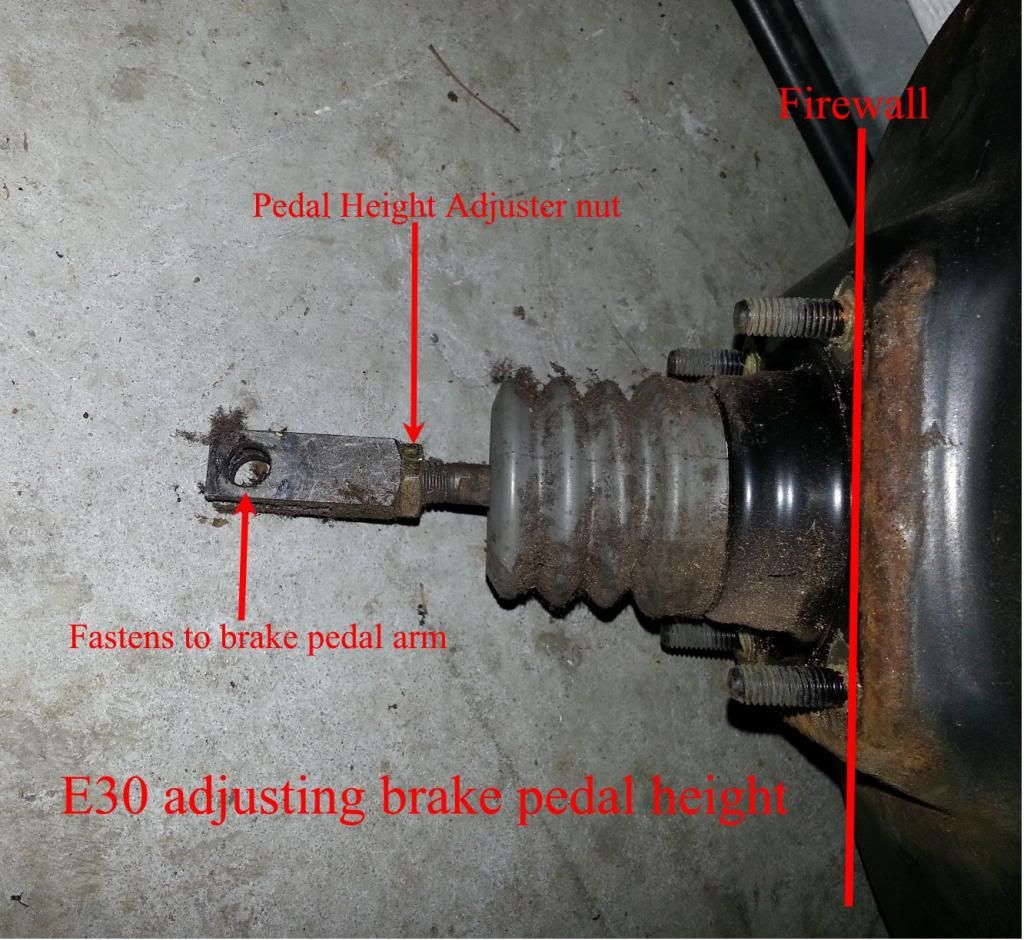I was told years ago that the height of our brake pedal was not adjustable so I never looked at the idea further. Instead I’ve always used a 1" spacer to give the pedal more height so when fully depressed it would be about the same height as the gas pedal.
Some of you, I’m sure, knew all along that the brake pedal was indeed adjustable. But for those of you like me that didn’t know, here’s how you do it.
The brake’s vac booster has a shaft that sticks thru the firewall towards the brake pedal. The shaft is fastened to the brake pedal arm via U-shaped device that is threaded on the shaft. The U-shaped device is held in place by a nut on the shaft. Thru the U-shaped device goes a pin that fastens it to the brake pedal arm. If you remove the pin and loosen the nut, you can put a few turns on the u-shaped device which will change the shaft’s effective length. Then tighten the nut against the U-shaped device.
The pin that goes thru the brake pedal arm has a clip on it’s end to hold it in place. The key to removing that pin is figuring out how the clip works. So when you attempting to remove that clip, focus less on brute forcing the damned clip (like I did) and more on figuring out how the bastard works.
The fastening point of the booster shaft on the brake pedal arm creates a 4:1 ratio. Since the shaft is prob a 1.25mm pitch thread, each turn gives you 5mm of pedal height change.
This is do-able with your seat in, but easier with the seat out.




